Thursday, October 26th, 2023
We Could Be Heroes
Cover image: La Mambo de Bois Caïman - Cécile Fatiman (detail)
© Entrée to Black Paris
We Could Be Heroes is a phenomenal exhibition that commemorates the efforts of numerous women and men throughout France's history of enslavement to resist their condition and reach for freedom.
It is particularly powerful because it is being presented in the Pantheon, where several personalities who worked to abolish slavery or prevent its reinstatement are honored.
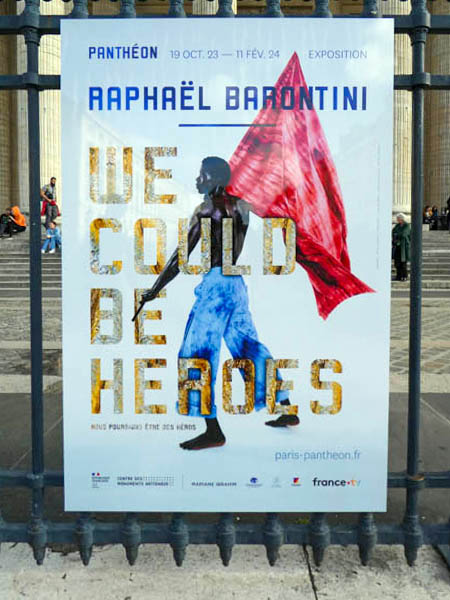 We Could Be Heroes - signage on Pantheon gate
We Could Be Heroes - signage on Pantheon gate
© Entrée to Black Paris
The artist, Raphaël Barontini, has created an "imaginary pantheon" of five women and six men who led or otherwise positively influenced the struggle for emancipation in Saint-Domingue (now Haïti), St. Lucia, Guadeloupe, Reunion Island, and French Guiana. Ten artworks depicting these heroic people flank the west nave of the Pantheon (nearest the entrance), with flags made from dyed and iridescent fabrics serving as backdrops. (One man and one woman - Anchaing and Héva of Reunion Island - are represented as a couple.)
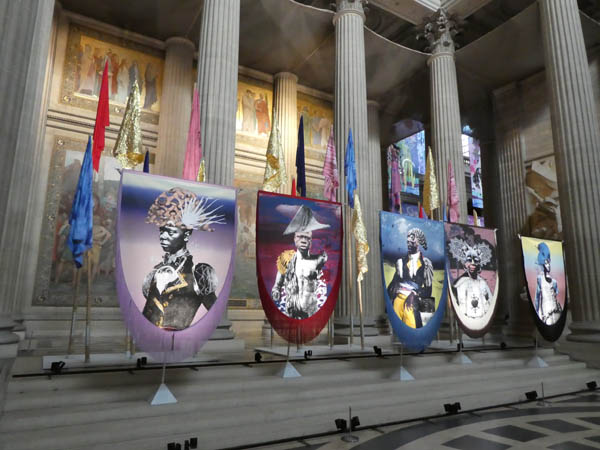 Artworks on north side of western nave
Artworks on north side of western nave
© Entrée to Black Paris
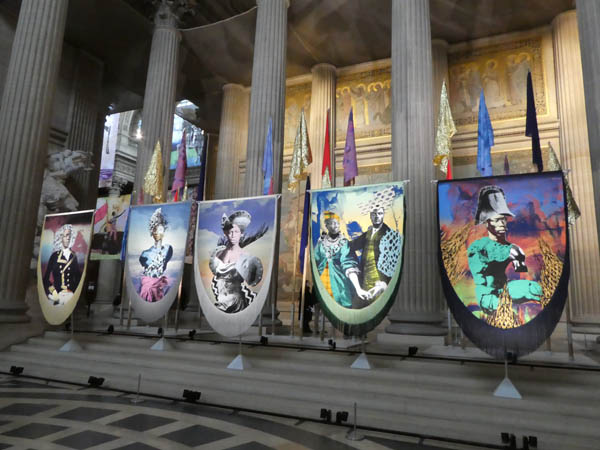 Artworks on south side of western nave
Artworks on south side of western nave
© Entrée to Black Paris
Moving to the center of the building, visitors must look toward the ceiling to see the banners presented in the north and south transepts.
On the north side, in a work called Le Gouffre, Barontini presents a muscular Black man appearing to fall from the sky. He is Joseph, the best known Black male model in 19th-century France, and his fall represents the descent of Black people into the horrors of slavery.
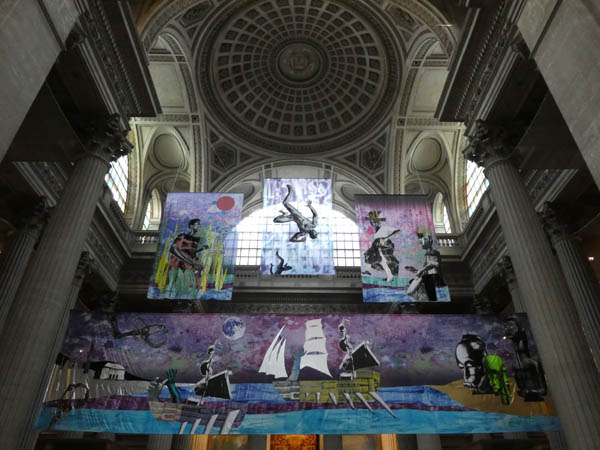 Artworks at northern transept
Artworks at northern transept
© Entrée to Black Paris
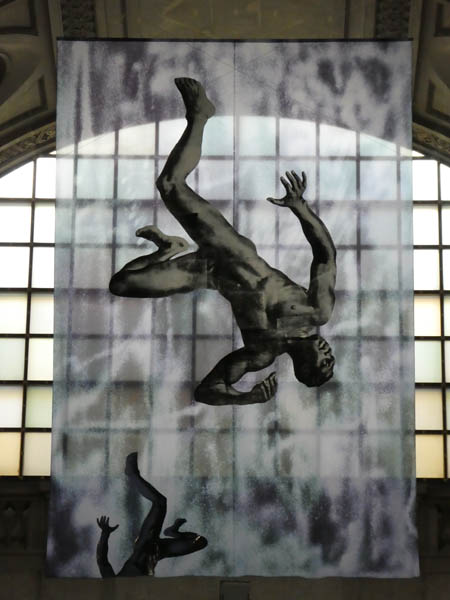
Le Gouffre
© Entrée to Black Paris
To the left, Le Marron pays homage to all who escaped or attempted to escape bondage. To the right, Léwoz represents the music and dances of Martinique and Guadeloupe that were artistic forms of resistance to slavery.
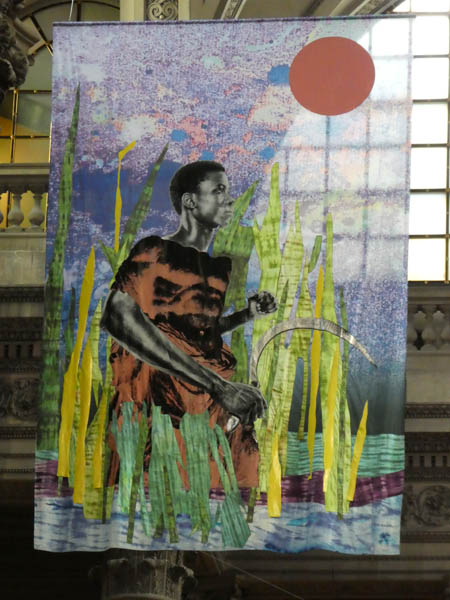 Le Marron
Le Marron
© Entrée to Black Paris
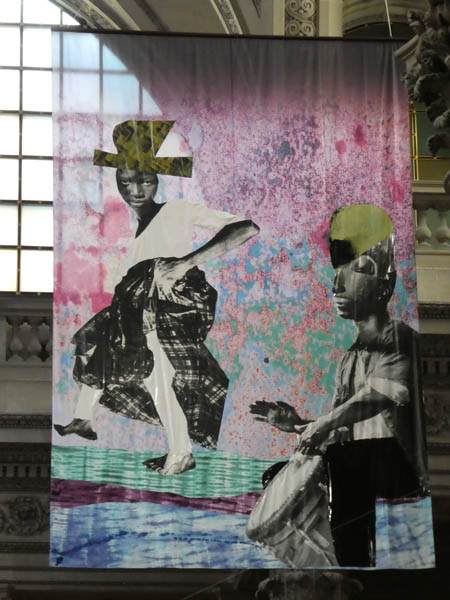
Léwoz
© Entrée to Black Paris
Beneath these three works, La Traversée depicts the uprooting of millions of Africans through the triangular trade, the Middle Passage itself, and a slave plantation in Guadeloupe.
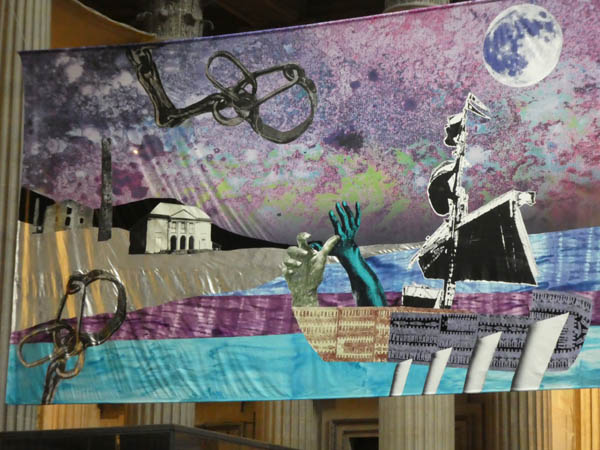 La Traversée (detail)
La Traversée (detail)
© Entrée to Black Paris
In the south transept, the large banner presents the Battle of Vertières, during which those fighting against the reinstatement of slavery in Haïti won a decisive victory over the French. The two individuals depicted in the works above the banner are Solitude and Toussaint L'ouverture.
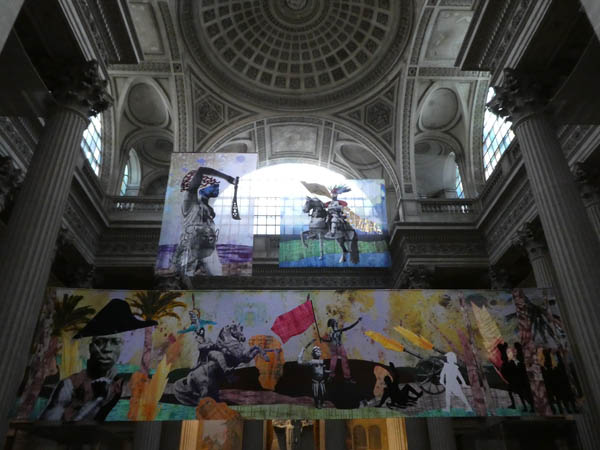 Artworks at southern transept
Artworks at southern transept
© Entrée to Black Paris
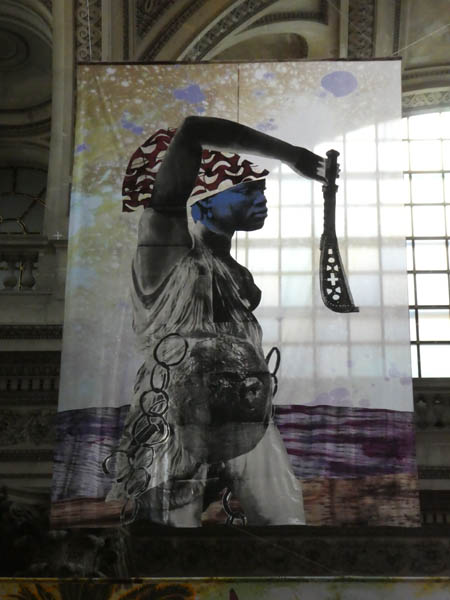 Solitude
Solitude
© Entrée to Black Paris
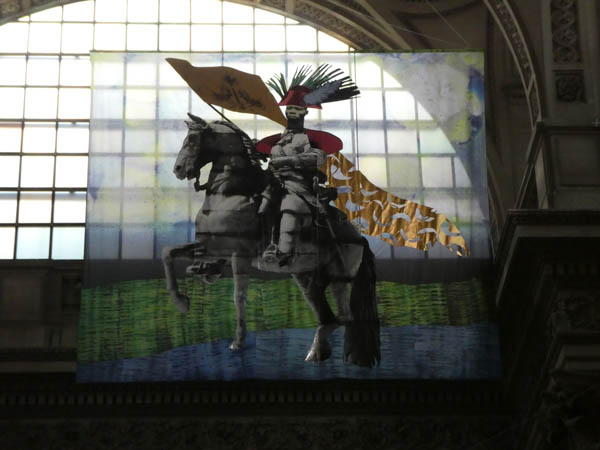 Le Triomphe de Toussaint
Le Triomphe de Toussaint
© Entrée to Black Paris
On the afternoon of October 22, a two-act performance was staged to highlight the exhibition. Musician/composer Mike Ladd broadcast an original sound piece through strategically placed speakers that set the tone for the afternoon and prepared the sizeable audience for a dramatic procession that would be the main attraction of the day.
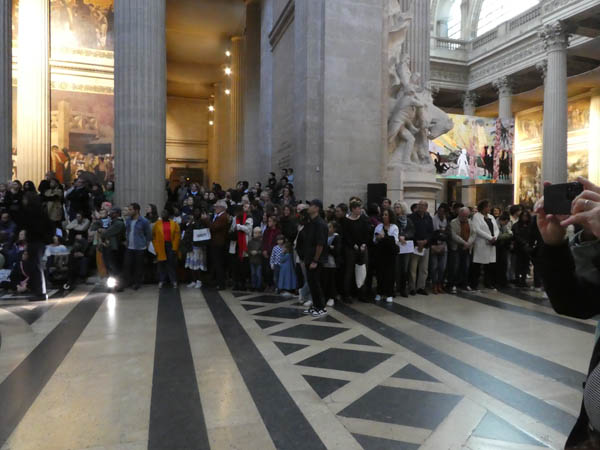 Audience
Audience
© Entrée to Black Paris
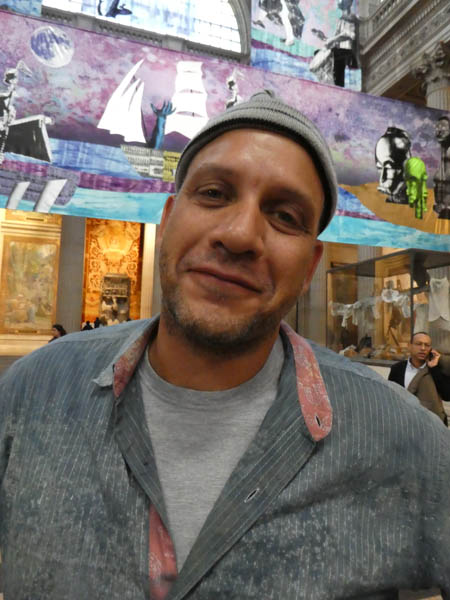
Mike Ladd
© Entrée to Black Paris
Mas Choukaj, a group of Caribbean carnival musicians based in Seine-Saint-Denis, delivered an inspirational performance of drumming and chanting while revealing the banners of the honored historical figures one by one. The massive monument to the National Convention, located in the eastern part of the nave, served as a backdrop.
Mas Choukaj - Opening sequence (5:59 minutes)
© Entrée to Black Paris
Dressed in costumes designed and created in collaboration with students of the Masters in Fashion Design and Textiles program at the Duperré School of Applied Art in Paris, group members moved each of the ten banners to the center of the building to surround the circle over which Foucault's pendulum swings.
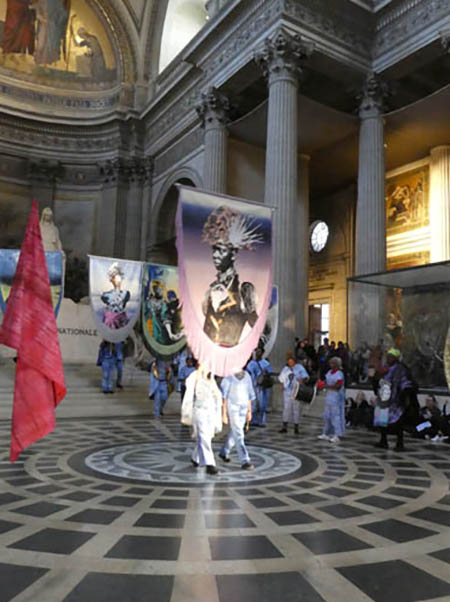
Procession toward Foucault's pendulum - Sanité Bélair
© Entrée to Black Paris
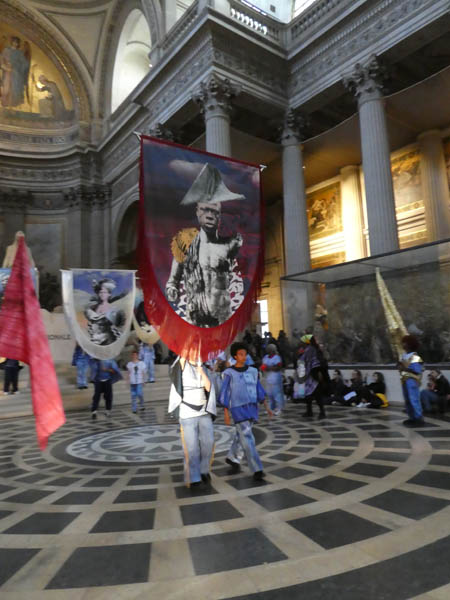 Procession toward Foucault's pendulum
Procession toward Foucault's pendulum
Dutty Boukman (foreground) and Victoria Montou - Toya (background)
© Entrée to Black Paris
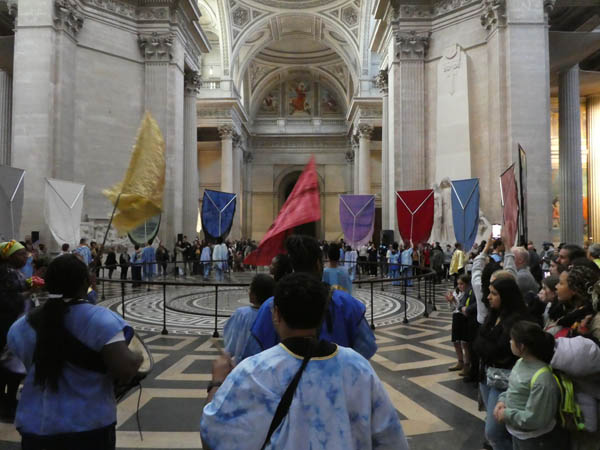
Around Foucault's pendulum
© Entrée to Black Paris
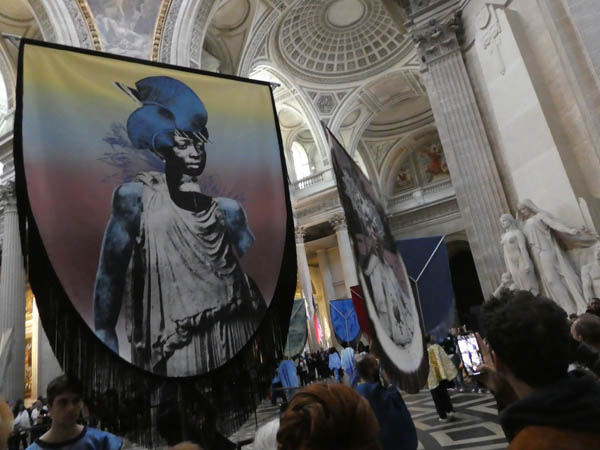
Around Foucault's pendulum - Flore "Bois" Gaillard
© Entrée to Black Paris
They then proceeded to the western part of the nave, where they placed the banners on the stands where the artwork is being displayed during the exhibition.
Mas Choukaj - Installation sequence (4:12 minutes)
© Entrée to Black Paris
Finally, they marched through the central doors of the building to the portico, where they ended their performance.
© Entrée to Black Paris
Barontini himself choreographed the procession, which unfolded seamlessly. (He is the man in the black Nike baseball cap who can be seen in the videos.) He and Mike Ladd have collaborated on various projects for over ten years.
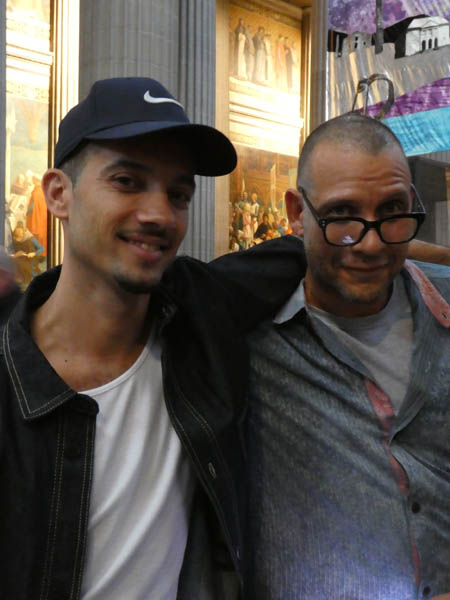 Raphaël Barontini and Mike Ladd
Raphaël Barontini and Mike Ladd
© Entrée to Black Paris
The Pantheon's Website describes We Could Be Heroes as follows (English translation):
... superimposing techniques and colors, the artist assembles fragments of landscapes, bodies, adornments and motifs drawn from visual languages of different periods, cultures and geographies. Combining artistic, historical and societal questions, they are all opportunities to “creolize the imagination” (Raphaël Barontini).
We Could Be Heroes will be on display through February 11, 2024. Visitors to the Pantheon can view the exhibition for the cost of general admission to the monument (11.50€ for standard entry).
Le Panthéon
Place du Panthéon
75005 Paris
RER: Luxembourg (Line B)
Hours: October 2023 - 10:00 AM - 6:30 PM; November 2023 through February 2024 - 10:00 AM - 6:00 PM
Order your tickets online by clicking HERE.

 Our Walk: Black History in and around the Luxembourg Garden - Click here to book!
Our Walk: Black History in and around the Luxembourg Garden - Click here to book!